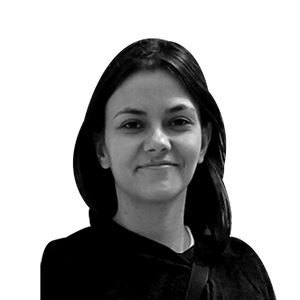Castel Gandolfo awaits Leo XIV with open arms
The former summer residence of the pontiffs, which Francis never used, has been converted into a museum but hopes to also host the new pope.


RomeIn the window of the Antico Forno in Legna, at the gates of Castel Gandolfo, Daniela proudly displays a letter sent by the Vatican Secretariat of State and signed by the Pope Francis in which the Argentine pontiff thanks them for sending some artisan pastries. "His Holiness thanks you for the gift and the feelings of filial veneration that this kind gesture has suggested […] and gladly sends you his blessing," reads the letter, dated 2022. "Pope Francis was a fan of our pastries. Every Sunday, someone would pass by and take them to Rome."
Located about 25 kilometers from Rome, Castel Gandolfo not only has stunning views over Lake Albano, it also has a long tradition and history linked to the popes, to the point that John Paul II christened it Vatican II. The palace is located in this town of barely 9,000 inhabitants. Urban VIII ordered its construction in 1626 to escape the stifling Roman heat. John Paul II chose it as a summer residence and even had a swimming pool built there, while Benedict XVI remained there in the first months after his resignation, before retiring permanently to the Vatican monastery Mater Ecclesiae. "Here I have everything: the lake, the mountains, and I see the sea," the German pope used to repeat with satisfaction.
Everything changed with the arrival of Francis. The Argentine Jesuit, who never took vacations as Archbishop of Buenos Aires, also did not take one as Bishop of Rome. The pontiff gave up spending the night in this mini-Vatican and only visited Castel Gandolfo twice, breaking with tradition and making it difficult for restaurants, hotels, and souvenir shops to operate. that overlook Piazza della Libertà, where the entrance to the papal residence is located, and which managed to survive all year round thanks to summer sales.
The absence of Pope Francis caused the influx of tourists to fall by almost 70% in the first year and plunged the local economy, whose main driving force was religious tourism, into a deep crisis. However, from 2014 onwards, the municipality experienced a Renaissance when the Pope decided to open the entire complex to the public and include it in the Vatican Museums' cultural offerings.
Since then, tourists have been able to access the papal villa, including the popes' private apartments, such as the library and bedroom; visit the astronomical observatory; and stroll through the spectacular 55-hectare gardens—larger than the Vatican itself—which feature secret corners designed by Bernini, an archaeological area, and even a farm.
The transformation from a papal summer residence to a museum was a huge boost for the town's economy thanks to the arrival of a new type of tourist, no longer strictly religious, according to local authorities. A year later, Castel Gandolfo closed with more than 100,000 visitors.
"Francis' absence in the early years caused initial difficulties, but there has been significant economic growth since then," acknowledged Mayor Alberto De Angelis. But it's not just the local economy that has benefited from the Argentine Pope's decision. With a deficit of almost 68 million euros, the expansion of the Vatican's cultural offerings has brought new income to the Holy See's strained coffers, which are largely financed by museum admissions.
The uncertainty of change
Castel Gandolfo lived the election of Leo XIV on May 8 with deep devotion, but its residents are now divided between those they hope to have as a neighbor this summer the American pontiff, and those who fear that closing the papal residence to the public will harm the local economy.
"It will be difficult for the Pope to spend his holidays here again because I don't think the Vatican will easily give up the money the museum generates," Doda Angeletti, owner of a small craft shop in the historic center, told ARA. She is convinced that the hypothetical return of Leo XIV will be a success "because pilgrims spend less money."
The Pope's return to the Vatican Apostolic Palace as his usual residence, instead of the Santa Marta residence where Francis lived, has given hope to those who are eager to see the pontiff appear on the balcony overlooking Piazza della Libertà this summer. The mayor, for his part, only hopes that Leo XIV will visit the small town, at least to celebrate the traditional Mass of the Assumption on August 15, as John Paul II and Benedict XVI used to do. Many are already awaiting Castel Gandolfo with open arms.
